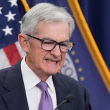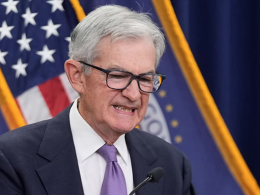by Kristina Hooper, Chief Global Market Strategist, Invesco
Key takeaways
- Disinflation progress - More data was released indicating greater disinflationary progress in the US – which in my view means we will get a Federal Reserve rate cut this quarter.
- Earnings season - I think this will be a rather positive earnings season. S&P 500 companies are forecasted to deliver their highest year-over-year earnings growth since the first quarter of 2022.
- Economic initiatives - The new UK Labour government announced the launch of a multi-billion pound national wealth fund to support green investment and infrastructure development.
Recent data on US inflation shows that the disinflationary process — while imperfect — is picking up steam. I believe the Federal Reserve will cut before the end of the third quarter, and I see room for more than one rate cut in 2024. But this is just one of a long list of topics on investors’ minds this week.
US disinflation may lead to a third-quarter Fed rate cut
Last week more data was released indicating greater disinflationary progress in the US – which in my view means we could get a Federal Reserve (Fed) rate cut sooner.
US Consumer Price Index (CPI) for June fell 0.1% month over month and was up 3% year over year, while core CPI rose 0.1% month over month and was up 3.3% year over year1, which was below expectations. This is very significant progress — core CPI for June 2023 was up 4.8% year over year2 — and while inflation is not at the Fed’s 2% target, it is moving there rather quickly. In addition, the US Producer Price Index (PPI) rose 0.2% month over month and 2.6% year over year, while core PPI rose 0.4% month over month and 3% year over year.3
Based on this data, back-of-the-envelope calculations suggest the core Personal Consumption Expenditures (PCE) index for next month is likely to hold at around 2.6% year over year. That’s below where the Fed anticipated it would be at year end in the June “dot plot,” when it anticipated just one rate cut this year. This suggests to me there is definitely room for more than one rate cut in 2024. And keep in mind that this data comes on the heels of more benign average hourly earnings growth, as seen in the June US jobs report.
Another key consideration for the Fed is consumer inflation expectations. The preliminary reading of University of Michigan Consumer Inflation Expectations for July showed expectations continued to moderate and are clearly well-anchored. One-year-ahead inflation expectations fell to 2.9%, as did five-year ahead inflation expectations.4 While not at the Fed’s target, I believe we are at what I consider to be a normal level relative to history. For example, 20 years ago, in July 2004, one-year ahead inflation expectations were 3%. And 10 years ago, in July 2014, one-year ahead inflation expectations were 3.3%. And five years ago, in July 2019, one-year ahead inflation expectations were 2.6%.5
Now, as I always say, the disinflation journey is imperfect; not every data point will support the disinflationary narrative. The one fly in the ointment is container prices. The Drewry WCI Composite Index, which tracks the costs of shipping a 40-foot container of goods, has increased dramatically in the past year. It is currently at $5,901, up from $1,474 in early July 2023. That’s still well below the pandemic peak of $10,377 in September 2021, but it is 315% higher than average 2019 rates of $1,420.6 This seems to be a situation caused by several different factors, including conflicts in the Red Sea, reduced port productivity and reduced container supply.
More signs point to a weakening US economy, especially consumers
Not only has US unemployment risen significantly — from 3.7% in January to 4.1% in June — but consumer sentiment has further deteriorated, falling for the fourth consecutive month to 66.0 in July. That’s its lowest level since November 2023.7 It is worth noting that most pain is being felt by those consumers in the bottom third of income levels; their sentiment readings are materially lower than those in the middle third.
And companies in their earnings calls are telling us that the consumer is weakening. For example, Pepsi CEO Ramon Laguarta shared that “in the US there is clearly a consumer that is more challenged…”8
Banks kick off the second-quarter earnings season
While it has just begun, in general I think this will be a rather positive earnings season. S&P 500 companies are forecasted to deliver earnings growth of 9.3% for the second quarter — which would be the highest year-over-year earnings growth rate since the first quarter of 2022.9 What’s more, the downward revisions to earnings that occurred over the course of the second quarter have been small compared to the level of revisions that typically occur during that period.
Banks largely have been the first companies to report. Net interest income has deteriorated as banks have had to pay higher interest rates to retain and attract deposits; I would expect this to continue. And banks have increased their loan loss provisions, a sign they are anticipating more headwinds going forward.
The new UK government launches initiatives to help the economy
The new UK Labour government wasted no time to show its focus on economic growth, launching the UK Strategic Development Sovereign Wealth Fund with significant public money — and the goal of attracting far more private investment.
The objective of this multi-billion pound national wealth fund is to grow the UK economy through business investment. The government has thus far allocated £7.3 billion so that investments can be made "immediately" in areas such as ports, manufacturing, and renewable energy.
This is all part of a larger trend that we noted in our midyear investment outlook: the use of industrial policy in order to shape the economy by targeting specific industries or economic activities. As the International Monetary Fund explained, greater interest in industrial policy has been driven by governments seeking “effective tools and strategies to remedy the fallout from multiple compounding crises…coupled with intensifying geopolitical tensions and conflicts, including over territory, resources and leadership in new technologies” as well as “unmet public demands for climate mitigation and adaptation strategies.”10
In short, because of economic and national security concerns, countries are now far more likely to use industrial policy as a tool — which I believe is far preferable to, and more effective than, the use of tariffs in attempting to support growth and shape an economy. Just look at the use of industrial policy in the US to support the building of semiconductor manufacturing facilities.
So what does this mean for investors?
Don’t ignore the disinflationary trend. Based on the data we are seeing, I believe the Fed will definitely cut before the end of the third quarter. I haven’t wavered in that view and I certainly won’t now that data has become more compelling. I anticipate smaller-cap stocks and cyclical stocks will discount an economic re-acceleration later this year.
I expect the US dollar to weaken more, which should provide a tailwind for foreign equities. In particular, I am positive on UK equities, Canadian equities, and emerging market equities. (Volatility in European equities could present buying opportunities.) They all have had attractive valuations, greater cyclical exposure, and the catalyst of rate cuts in the offing.
And now that global easing is likely to accelerate, locking in higher bond yields, increasing exposure to investment grade credit and municipal bonds could make sense, in my view.
However, I’m not suggesting moving money out of tech in favor of other areas such as value and small caps and non-US stocks. Instead, data indicates many investors have a substantial overweighting of cash on the sidelines from which to deploy into areas that are likely to tactically benefit from monetary policy easing.
While that is my base case, there is the risk that central banks – especially the Fed – have not begun to cut quickly enough. There is a very real possibility that the long and variable lags of monetary policy have already had a very negative impact on the US economy that should lead to a serious downturn. In that scenario, markets would shift to a “risk off” stance in that type of environment in anticipation of an economic downturn.
That scenario is definitely not my base case, but I do think there is the potential for a sell-off at some point in the coming months. However, as I’ve said before, I think any kind of sell-off would be short-lived and represent a buying opportunity.
What to watch this week
China’s Third Plenum, a seminal event typically held every five years and originally expected late last year, kicked off on July 15. Various reforms are expected, including an overhaul of the fiscal system to provide funds to regional governments that are in need of greater fiscal support. Property-related policies are also anticipated, which will be critically important as the sector faces lower prices and rising inventory. Hukou (household registration system) reform is also likely to be addressed and could allow for greater migration within China — which is likely to spur urban housing demand. Tax reform may also addressed, which should help local governments offset the decline in land sales revenue. We could also see more measures tackling local government debt, which is experiencing a minor maturity wall.
It is worth noting that China gross domestic product for the second quarter clocked in at 4.7% year over year, which is below expectations. However, I anticipate this is likely to be relatively temporary. An increase in policy support – likely forthcoming from this week’s Third Plenum — and continued export strength should be supportive of growth in coming months.
The European Central Bank (ECB) also meets this week, although no rate cut is expected given messaging that the ECB will be very patient about future rate cuts.
Footnotes
1 Source: US Bureau of Labor Statistics, July 11, 2024
2 Source: US Bureau of Labor Statistics, July 12, 2023
3 Source: US Bureau of Labor Statistics, July 12, 2024
4 Source: University of Michigan Survey of Consumers (preliminary), July 12, 2024
5 Source: St. Louis Federal Reserve Department of Research, as of July 12, 2024
6 Source: Drewry, July 11, 2024
7 Source: University of Michigan Survey of Consumers (preliminary), July 12, 2024
8 Source: Pepsi earnings call, July 11, 2024
9 Source: FactSet Earnings Insight, July 12, 2024
10 Source: “The Return of Industrial Policy in Data”, International Monetary Fund Working Paper, January 2024
Copyright © Invesco














